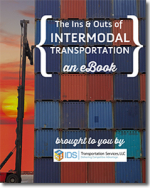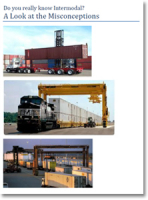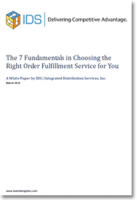The Ins and Outs of Intermodal Transportation
Intermodal can be a key ingredient to any transportation strategy to move an organization toward a multimodal strategy for scalability, flexibility, mitigation of risk and business continuity.
The Intermodal Market: More than Truckload Alternative
By now you probably have heard the standard benefits of choosing an intermodal service, as compared to shipping your freight via a truck:
- Intermodal delivers transit times that are comparable to over-the-road options, along with over 98% on-time
- Reduces emissions
- Saves fuel
- Relieves highway congestion
- Reduces supply chain costs
- Enables you to reach new markets
- Expands capacity, without requiring investment in additional equipment
Some of the numbers behind the above comments include:
- One train moves 280 trucks
- For every 1.0 million intermodal loads, there are 10,000 trucks pulled off the road
- Intermodal rail can move 1.0 ton of freight nearly 500 miles with a single gallon of fuel
These are all great marketing lines and stats, but just as in sports, games are not won on stats, but when the game is played. For one reason or another, there are still some shippers sitting on the sidelines waiting for the “best” time to jump into the intermodal game.
We believe there is no better time than now to embrace an intermodal strategy.
The Journal of Commerce put a number of truckload and LTL executives up on stage at one of their more recent conferences to share their vision on the future of the freight industry; what their companies are doing about it; and what shippers should be considering in their transportation strategy.
- Shippers initially make the move to intermodal for cost and capacity reasons, but its consistent reliability that keeps them coming back
- 60 pages of must know content from industry experts that travel the country speaking to shippers, 3PL’s and capital markets about domestic intermodal.
- After reading this eBook, you’ll know all there is to know about the 53’ domestic intermodal market; fully understand what makes for a great intermodal lane; and how to operationally execute intermodal in the office and on the floor for a successful road-to-rail intermodal conversion program.
What’s Related




Favorites





